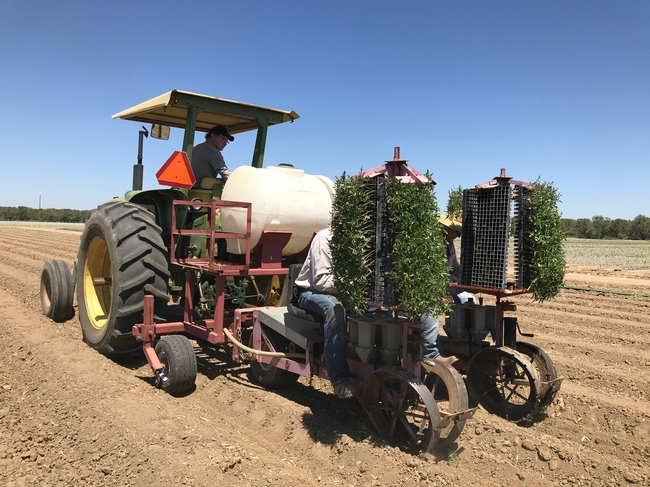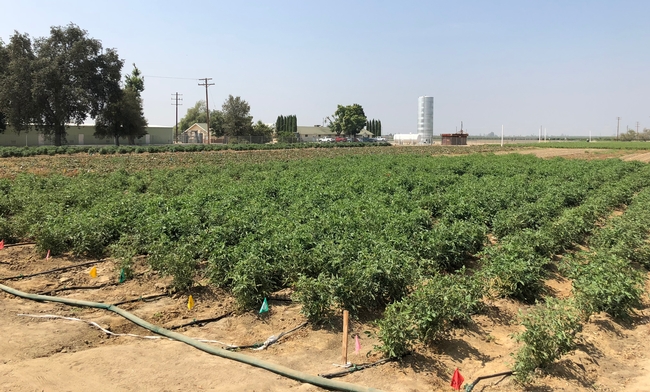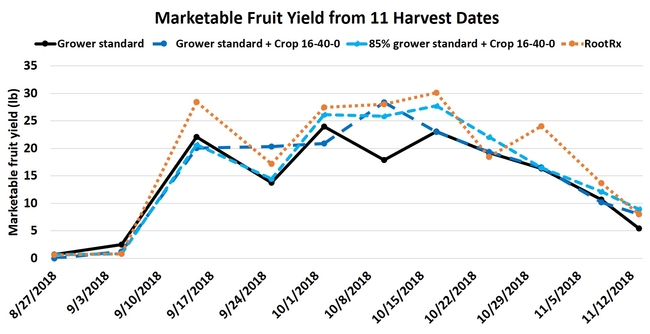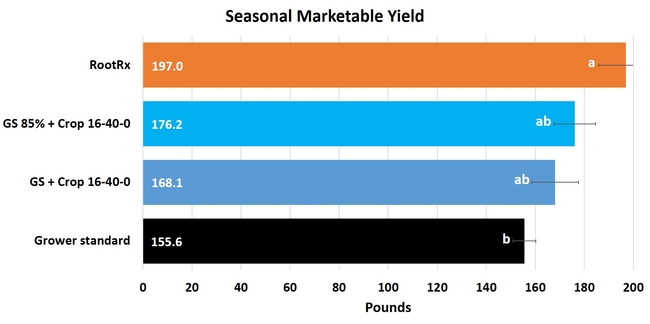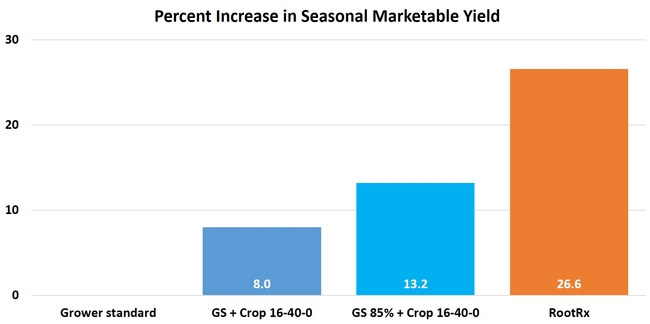There has been a growing interest in the recent years in exploring the potential of biostimulants in crop production. Biostimulants are mineral, botanical, or microbial materials that stimulate natural processes in plants, help them tolerate biotic and abiotic stressors, and improve crop growth and health. Several recent studies demonstrated the potential of the biostimulant or soil amendments in improving crop yields and health. For example, in a 2017 field study, silicon, microbial, botanical and nutrient materials improved processing tomato yields by 27 to 32% compared to the standard fertility program (Dara and Lewis, 2018). In a 2017-2018 strawberry field study, some biostimulant and soil amendment products resulted in a 13-16% increase in marketable fruit yield compared to the grower standard (Dara and Peck, 2018). He et al. (2019) evaluated three species of Bacillus and Pseudomonas putida alone and in different combinations in tomatoes grown in laboratory and greenhouse. The combination of Bacillus amyloliquefaciens, B. pumilus, and P. putida increased the plant biomass and the root/shoot ratio. Significant increase in fruit yield, between 18 and 39%, was also achieved from individual or co-inoculations of these bacteria. A field study was conducted in processing tomato to evaluate the impact of nutrient products containing beneficial microbes and botanical extracts on tomato yields and fruit quality.
Methodology
The study was conducted from late spring to fall of 2018 to evaluate three treatment programs compared to the grower standard. Tomato cultivar Quali T27 was seeded on 25 April and transplanted on 19 June using a mechanical transplanter. Due to high temperatures at the time of planting, some transplants died and they were re-planted on 28 June. Herbicide Matrix was applied on 5 July and Poast was applied on 13 July followed by hand weeding on 27 July. Crop was irrigated, fertigated, and treatements were applied through a drip system. Overhead sprinkler irrigation was additionally used immediately after transplanting. The following treatments were included in the study:
1. Grower standard: 10-34-0 Ammonium Polyphosphate Solution was applied at 10 gal/ac at the time of transplanting followed by the application of UAN-32 Urea Ammonium Nitrate Solution 32-0-0 at the rate of 15 units of N at 3, 6, and 13 weeks after planting and 25 units of N at 7 weeks after planting.
2. Grower standard + BiOWiSH Crop 16-40-0: BiOWiSH Crop 16-40-0 contains 16% nitrogen and 40% phosphate along with B. amyloliquefaciens, B. licheniformis, B. pumilus, and B. subtilis at 1X108 cfu/gram. Crop 16-40-0 was applied at 1 lb/ac at the time of planting followed by the application 0.5 lb/ac at 3, 6, and 9 weeks after planting.
3. Grower standard 85% + BiOWiSH Crop 16-40-0: Crop 16-40-0 was applied at the same rate and frequency as in treatment 2, but the grower standard was reduced to 85%.
4. RootRx: RootRx contains 5% soluble potash and proprietary botanical extracts and is supposed to stimulate a broad range of antioxidant compounds in the plant. It was applied at 0.25 gal/ac at the time of planting followed by the application of 0.5 gal/ac at 3, about 7, and 13 weeks after planting.
Each treatment contained 30' long bed with a single row of tomato plants and replicated five times in a randomized complete block design. Along with the fruit yield, the sugar content of the fruit and leaves [using a refractometer from three fruits (two measurements from each) and four leaves per plot], chlorophyll content (using a digital chlorophyll meter from four leaves per plot), and frost damage levels (using a visual rating on a 0 to 5 scale where 0 = no frost damage and 5 = extreme frost damage with a complete plant death) were also monitored. Due to an unknown reason, some plants in the fifth replication were stunted halfway through the study. Data from the fifth replication were excluded from the analysis. Data were subjected to the analysis of variance using Statistix software and significant means were separated using the Tukey's HSD test.
Results
Fruit yield: Marketable and unmarketable fruit yield was monitored from 27 August to 13 November. Seasonal total for marketable fruit was significantly (P = 0.04) different among the treatments where RootRx resulted in a 26.5% increase over the grower standard while Crop 16-4-0 with the full rate of the grower standard had an 8%, and with 85% of the grower standard had a 13.2% increase. It appeared that a similar improved yield response was also seen when Crop 16-40-0 was used at a reduced rate of the grower standard in other studies conducted by the manufacturer.
Sugar content: Sugar content of the fruit and leaves was measured once after the last harvest and there were no significant (P > 0.05) difference among the treatments.
Chlorophyll content: Chlorophyll content was measured once after the last harvest and there was no significant (P > 0.05) difference among the treatments.
Frost damage: Study was concluded after frosty conditions in November 2018 damaged the crop. Although there were no statistically significant (P > 0.05) differences, plants treated with RootRx had the lowest rating of 2.
Acknowledgements: Thanks to Jenita Thinakaran and the field staff at the Shafter Research Station for their technical assistance, Plantel Nurseries for providing transplants, and BiOWiSH Technologies and Redox Chemicals for their financial support.
References
Dara, S. K. and D. Peck. 2018. Microbial and bioactive soil amendments for improving strawberry crop growth, health, and fruit yields: a 2017-2018 study. UCANR eJournal of Entomology and Biologicals (https://ucanr.edu/blogs/blogcore/postdetail.cfm?postnum=27891)
Dara, S. K. and E. Lewis. 2018. Impact of nutrient and biostimulant materials on tomato crop health and yield. UCANR eJournal of Entomology and Biologicals (https://ucanr.edu/blogs/blogcore/postdetail.cfm?postnum=26054)
He. Y., H. A. Pantigoso, Z. Wu, and J. M. Vivanco. 2019. Co-inoculation of Bacillus sp. and Pseudomonas putida at different development stages acts as a biostimulant to promote growth, yield and nutrient uptake of tomato. J. Appl. Microbiol. https://doi.org/10.1111/jam.14273
